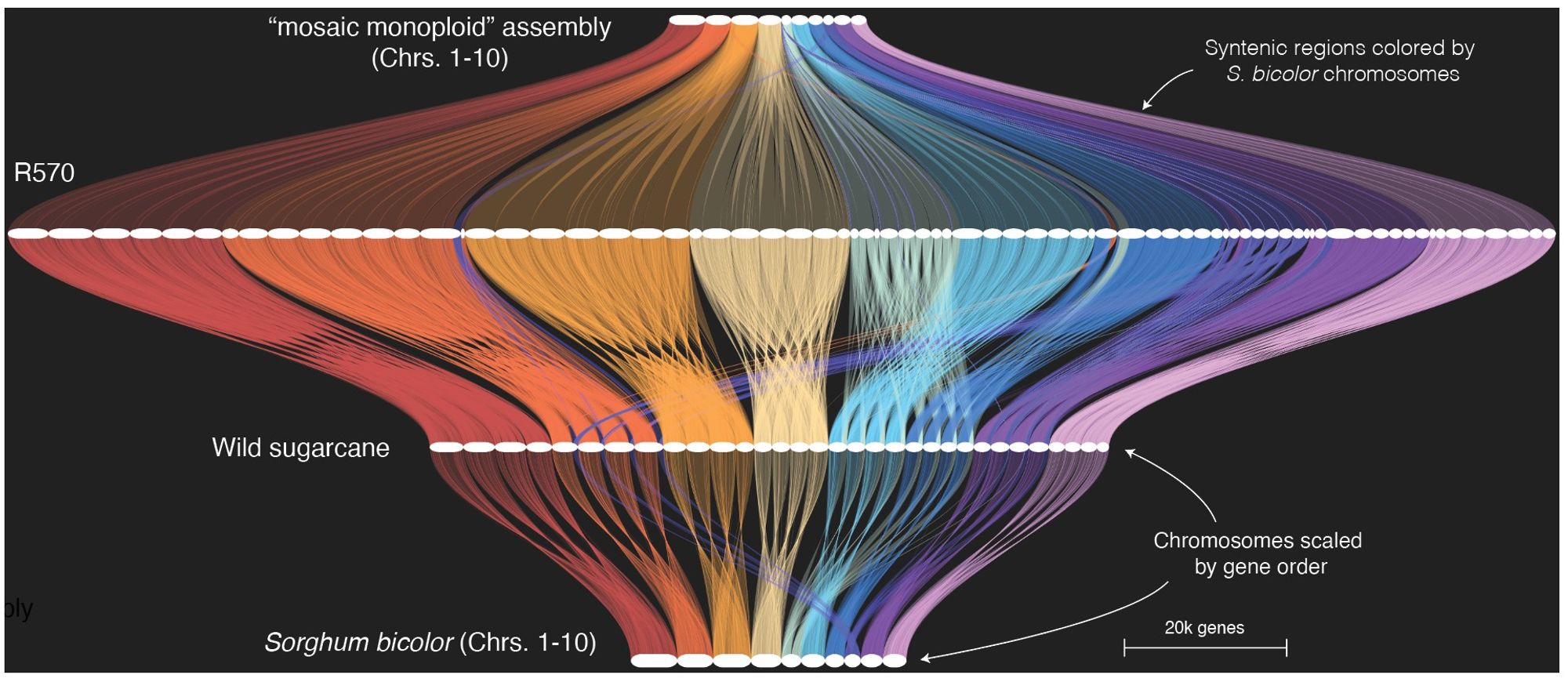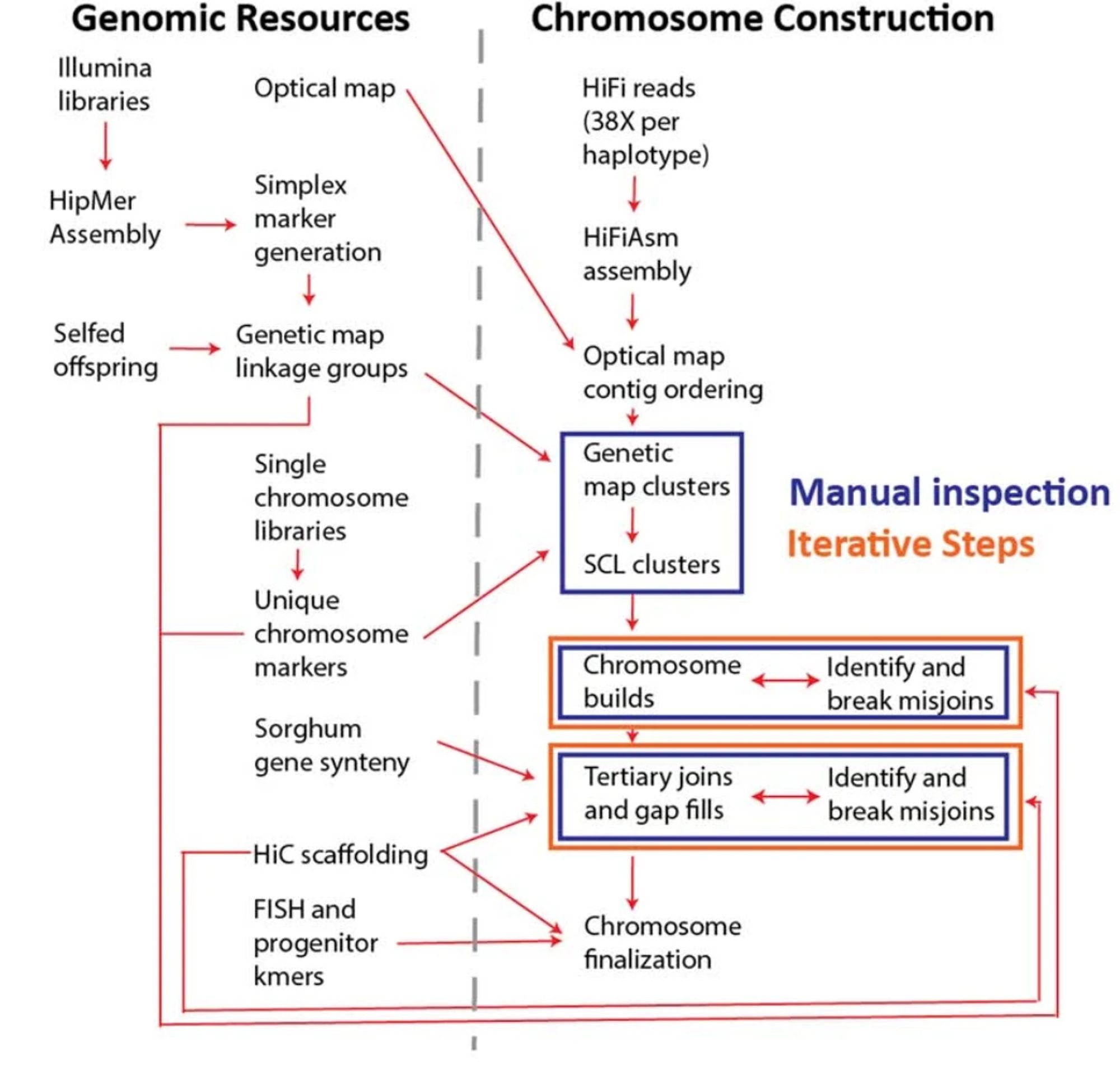
All this work was led by Adam Healey, and made possible with funding and support from hudsonalpha jgi BerkeleyLab jbei. Find the genome on @phytozome: phytozome-next.jgi.doe.gov/info/Soffici...
So, back to the original question - how can we make a sugarcane genome that is useful. To improve sugarcane, breeders look for genetic diversity within individuals; these are sites that segregate in selfed progeny populations — we need a genome that represents this diversity
However, in sugarcane this isn't appropriate: since gene copy number varies we cannot know the physical location of identical sequences. This means we cannot and should not produce a 'T2T' assembly for every chromosome.
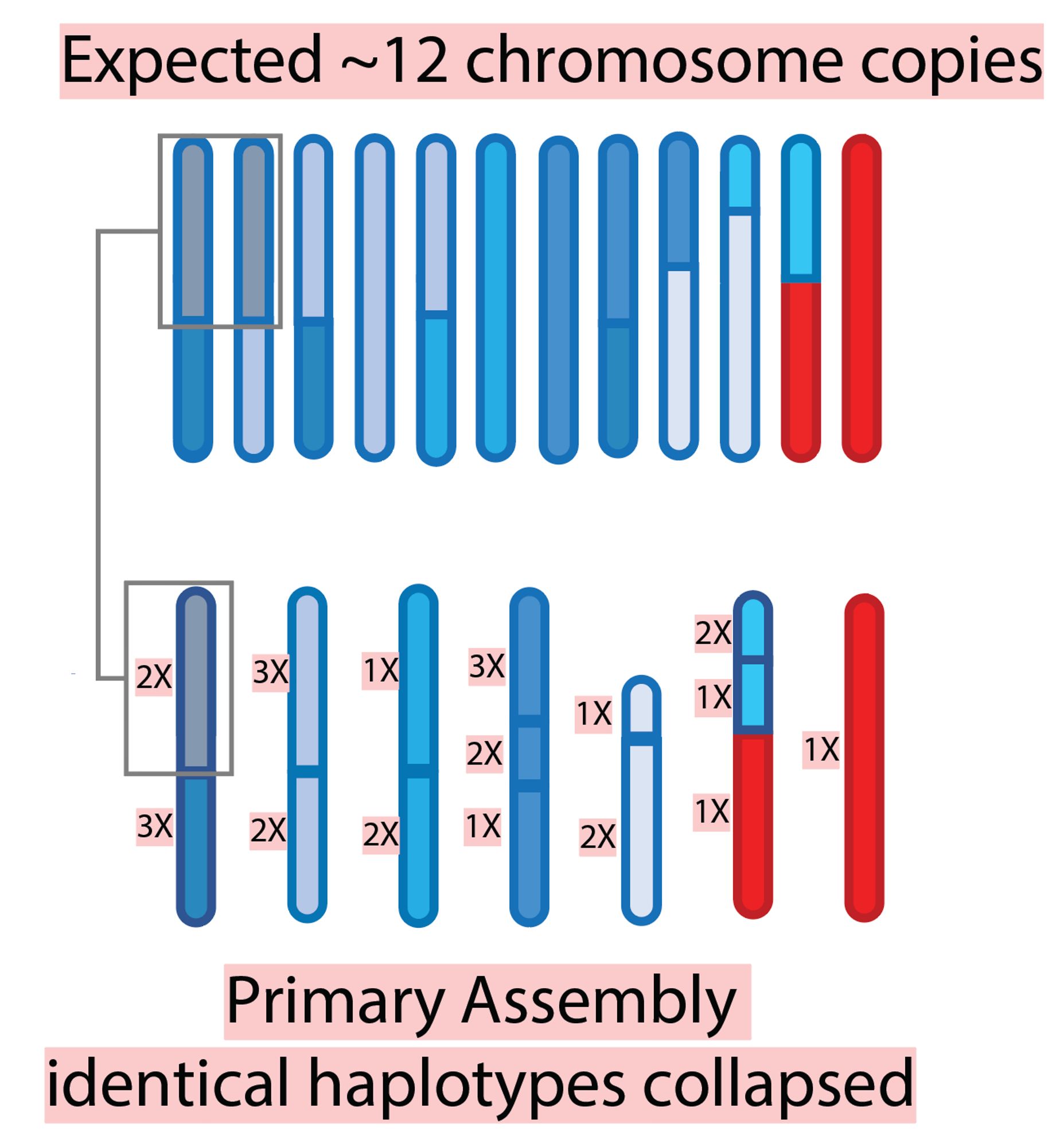
In simpler genomes like autotetraploid potato, IDB blocks due to inbreeding can be computationally duplicated so that each biological haplotype has the full complement of sequence.
But, it gets more complex. As the pedigree above shows, there is lots of inbreeding in hybrid sugarcane (R570 has only three grandparents), and about half of domesticated haplotypes are identical by descent (IBD) within the last century.
The two progenitor species are polyploid: domesticated sugarcane has 8X copies and wild has variable ploidy (4-16X). When combined with unreduced gametes and preferential but not purely disomic pairing, we get a hybrid sugarcane genome that looks like this for the R570 genotype:

The success of hybrid breeding is in part a fluke of sugarcane biology. F1 hybrids have twice the expected number of chromosomes from the domesticated progenitor, due to unreduced ovules.
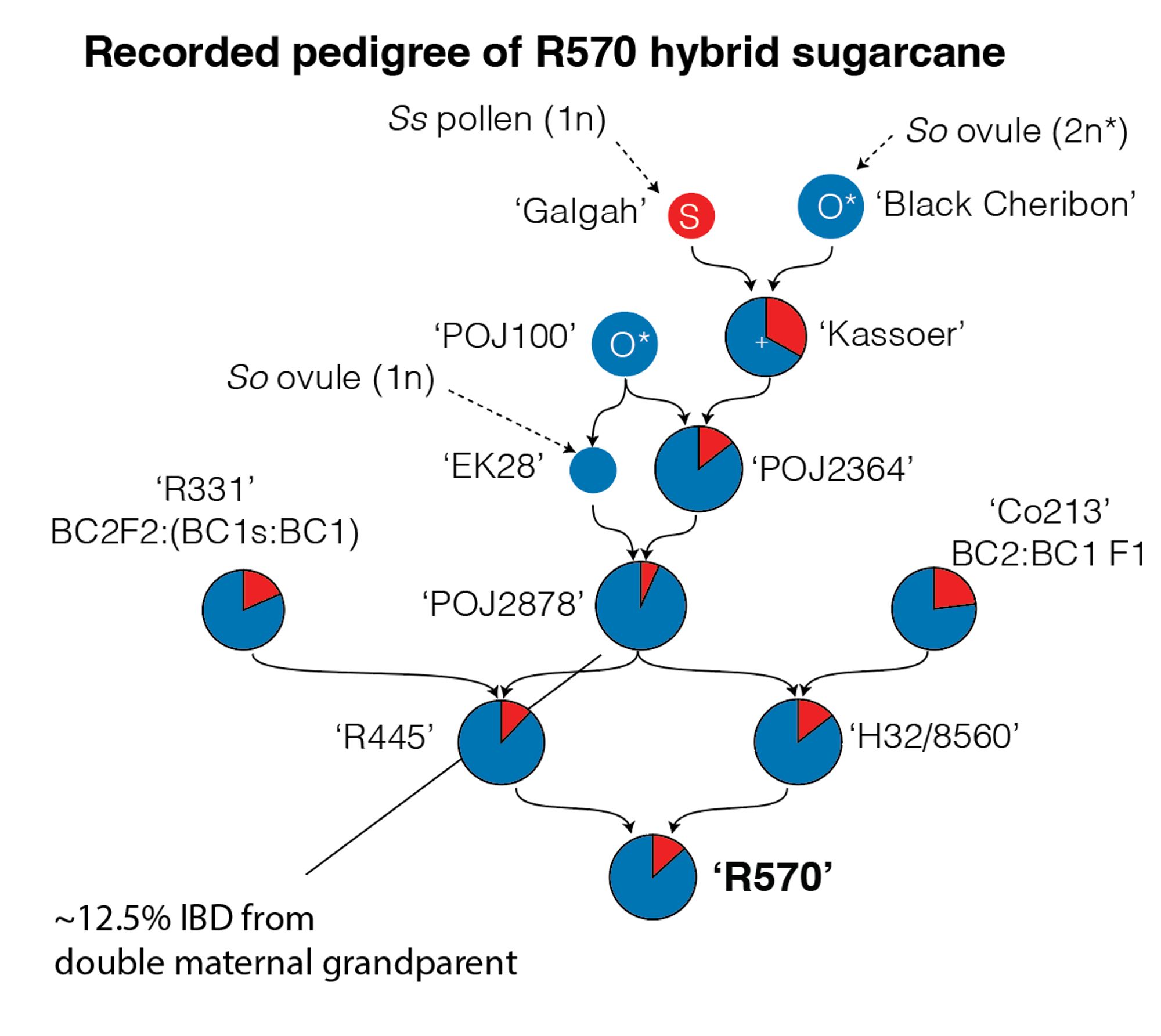
The majority of worldwide sugar production comes from a few clonally-propagated hybrid sugarcane cultivars. These were made by breeders to combine sugar production in the domesticated species (Saccharum officinarum) and pest/disease resistance of a wild relative (S. spontaneum).
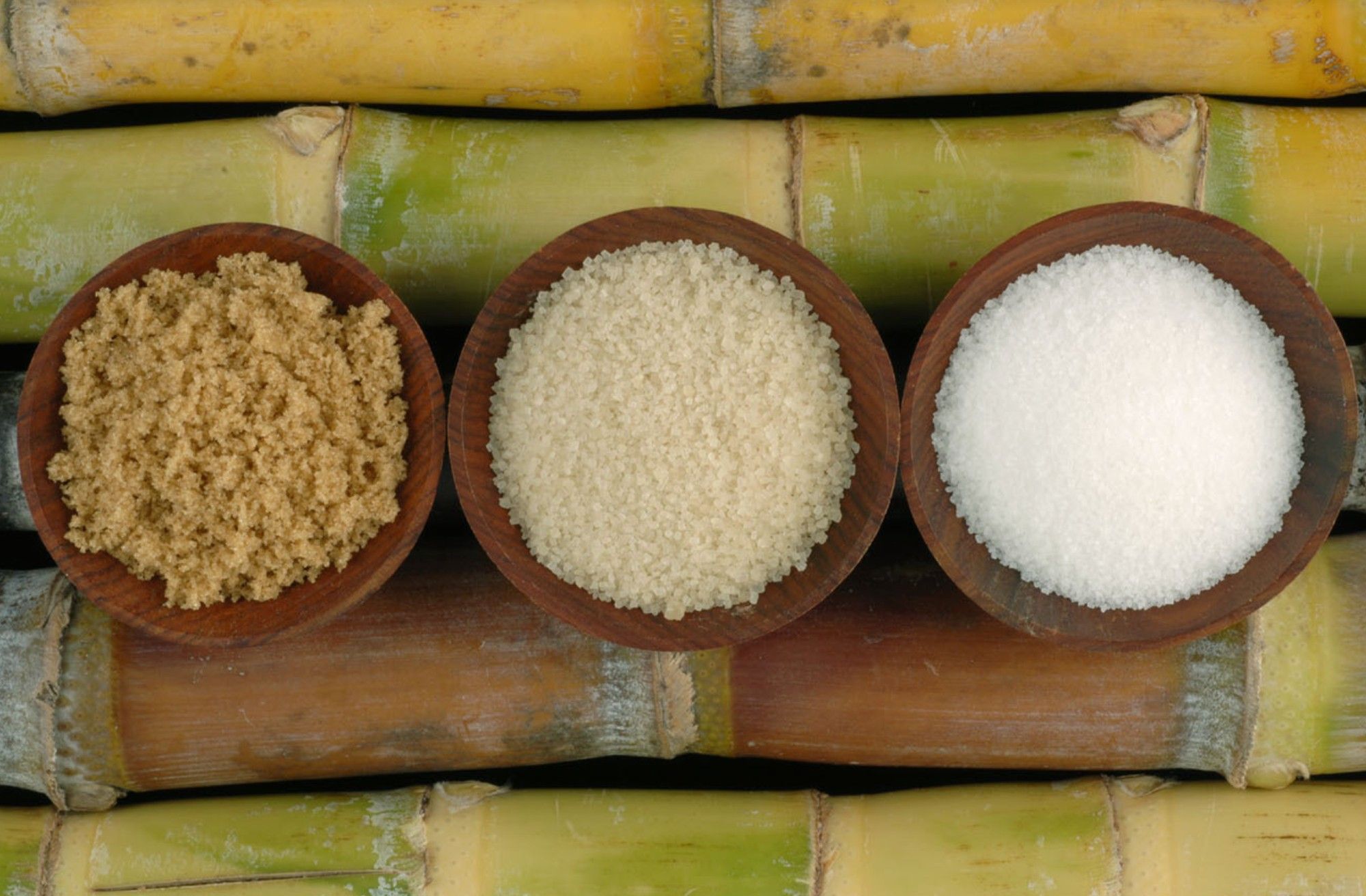
Our groups' goal is to produce genomes that are useful; this does not always mean 'telomere-to-telomere' assemblies. The hybrid sugarcane genome is a nice example of this. The article is out this week in Nature: www.nature.com/articles/s41...
